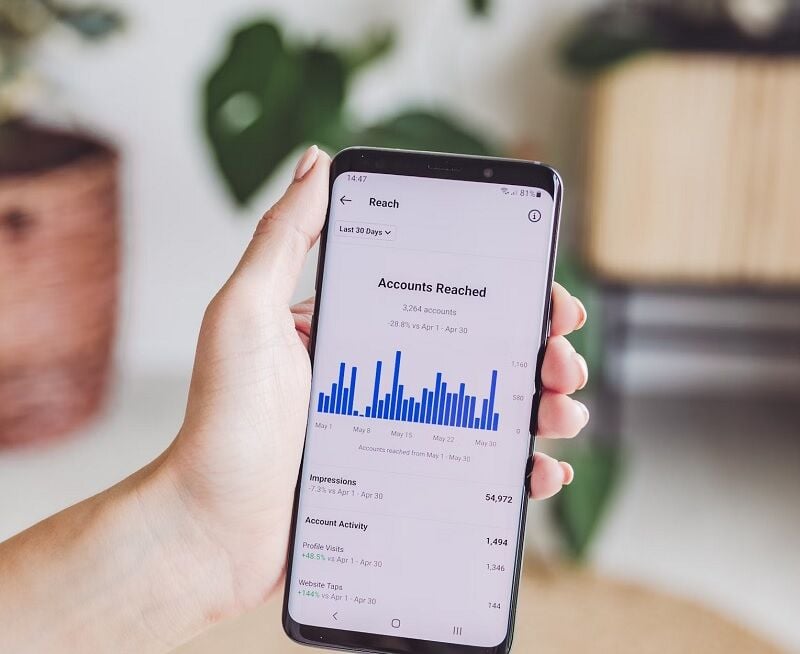Best times to apply Ads for stunning results

Deciding when to apply ads can transform your marketing strategy, turning visual assets into powerful tools for engagement. Whether you’re armed with graphics or videos, it’s crucial to know the perfect moment to launch your display ads. This not only maximizes visibility but also ensures your message reaches the right audience at the right time.
Re-engaging those who’ve previously interacted with your brand can encourage repeat business and strengthen loyalty. Understanding these key timings can significantly elevate your advertising efforts, making each campaign more effective and impactful.
Why advertisements are important
Understanding what an ad really means is crucial to leveraging its power to the fullest. It’s not just about showcasing a product or service; it’s a strategic communication tool designed to draw attention, spark interest, and drive sales. Let’s dive deeper into why ads play such a pivotal role, when to consider rolling them out on your website, and how to harness timing for maximum impact.
Advertisements are the lifeblood of marketing strategies, aimed at informing, engaging, and convincing your audience. They do more than just announce; they build awareness and foster a connection between your brand and potential customers. By deploying ads, you’re not just reaching out; you’re inviting your audience into a narrative, one that highlights what’s in it for them. Remember, it’s not just about visibility; it’s about making an impression that counts.
How much can selling Ad space earn?
The profit potential from selling ad space hinges on multiple factors, such as the quality of your content, the volume of traffic, and, importantly, the relevance and timing of the ads displayed. Here’s a glimpse into what affects your earnings:
| Factor | Influence on Earnings |
|---|---|
| Traffic Volume | More visitors mean more views and clicks |
| Engagement Level | Engaged visitors are more likely to interact with ads |
| Relevance of Ads | Ads relevant to your audience command higher engagement |
| Timing of Ad Placement | Strategic timing can increase visibility and clicks |
Cleverly integrating display ads into your site not only provides a steady revenue stream but also enhances the user experience when done right. Start small, measure response, and adjust your strategy to what resonates best with your audience for optimized profit.
The importance of timing in Ad placement
Choosing the right moment to introduce ads into your website can dramatically influence their effectiveness and, ultimately, your profits. The right timing ensures that your display ads reach your audience when they’re most receptive, enhancing the likelihood of engagement. Early mornings or late evenings? Weekdays or weekends? Identifying peak browsing times for your target demographic maximizes visibility and interaction, turning timing into a powerful marketing ally.

How to know when your website is ready for monetization
Monetizing your website with ads is a milestone, but timing is everything. Your site is ripe for ad placement when it attracts a steady stream of traffic that’s not just passing through but genuinely engaged. Look for indicators like increasing page views and session lengths – signs that visitors find your content valuable. Only then should you introduce display ads, ensuring they complement rather than clutter your site’s user experience.
What are the policies for putting ads on a website?
Placing ads on your website requires following specific guidelines and policies to ensure both legality and user satisfaction. It’s vital to keep abreast of these regulations to maintain the integrity of your site and your relationship with ad networks.
How many Ads should be on a website?
When considering the quantity of ads, there’s no universal number that suits all. However, it’s crucial to maintain a balance. Too few ads might mean you’re missing out on potential earnings, whereas too many could overwhelm your visitors, impacting their experience negatively. AdSense policies, for instance, emphasis real human engagement without excessive distractions. These guidelines steer clear of practices that could annoy your audience, such as overwhelming ad placements or deceptive ad formats.
Balancing Ad revenue with user experience
Achieving harmony between ad revenue and a positive user journey on your site is the golden rule. You want the ads to be effective without being intrusive. Ads should complement your content, not detract from it. Always remember, keeping your visitors happy and engaged increases the chance they’ll return, indirectly boosting your profit in the long run. Ad formats that blend well with your site’s design and content are less likely to disrupt the user experience, fostering a more appreciative audience.
The optimal number of Ads
Determining the right number of ads for your website is more art than science. It depends on factors like your site’s layout, content relevance, and the user’s engagement level. Test different ad placements and formats to see what works best for your audience and niche. Monitor metrics such as Click-Through Rates (CTRs) and engagement times to understand how ads affect your site’s performance. Remember, display ads should enhance your site’s profit without compromising on timing and the marketing strategy’s overall effectiveness. Consider your audience’s response as the ultimate guide to optimising ad quantity and placement on your site.
When to advertise – Some examples to keep in mind
At the end of the day
Timing is key in maximising ad engagement. An ideal moment for launching ads is when your audience winds down. For instance, placing smaller ads at bus and train stations targets consumers precisely when they’re receptive. This strategy leverages the transition period as they shift from work to personal time, significantly increasing your ad’s potential impact.
When it’s topical
Staying relevant boosts your marketing efforts significantly. You should launch display ads that resonate with current events or trends to capture audience interest swiftly. For example, aligning your ads with ongoing and popular discussions not only garners attention but also demonstrates your brand’s awareness and engagement with the world.
Advertising around political events and campaigns
Political events and campaigns offer a unique opportunity for targeted advertising. During these times, people are more engaged, discussing, and seeking information, making them more likely to interact with relevant ads. Tailoring your message to the political climate can tap into the heightened interest, potentially increasing your visibility and profit.
When you have at least 100 organic visits per day on a weekly basis
To optimise your marketing strategy, it’s crucial to wait until your website attracts a steady flow of traffic. Achieving at least 100 organic visits daily suggests your content resonates well with your audience, providing a solid foundation to introduce ads without detracting from the user experience. At this stage, your site’s visitors are more likely to engage positively with the ads, making this a prime time for ad placement.
Beyond timing – How to plan your advertising campaign

Digging deeper into the world of digital marketing, understanding when and how to deploy your ads is pivotal for driving profit. Let’s explore the terrain beyond mere timing, guiding your advertising campaign towards success.
What are search and display Ads?
In the realm of digital marketing, two primary ad types stand out: search ads and display ads. Search ads are the backbone of any campaign, popping up in search engine results when potential customers are actively hunting for services or products like yours. These ads are text-based and strategically appear based on the keywords a user inputs, making them highly targeted and intent-driven.
On the other side, display ads branch out across a vast network, including over 2 million websites, reaching an astounding 90% of online users. These ads take on varied formats, from images to videos, and do not rely on active searches. Instead, they use sophisticated targeting to appear in front of users based on demographics, interests, and more. Display ads are excellent for building brand awareness and retargeting, appearing on social media feeds, websites, and apps.
When to use each Ad type
Navigating the decision between search and display ads hinges on understanding your campaign’s goals.
- For Immediate Sales or Leads: Turn to search ads. Deploying these when you’re looking to capture the attention of users actively seeking what you offer maximizes your chances of conversion. It’s all about being there at the right moment, making search ads invaluable for direct response campaigns.
- For Brand Awareness and Engagement: Leverage the power of display ads. If your aim is to cast a wide net, informing potential customers about your brand or re-engaging previous visitors, display ads are your go-to. They excel in gently nudging users down the sales funnel through visual appeal and widespread reach.
Understanding when to apply ads is crucial for your digital marketing success. By leveraging the strengths of both search and display ads, you’re not just casting a wide net but also targeting those who are already on the lookout for what you offer. This dual approach ensures you’re not only capturing immediate sales but also building a brand that resonates with a wider audience over time. Remember, it’s about striking the right balance to foster both short-term gains and long-term brand loyalty. So, take this knowledge and apply it wisely to your digital marketing strategy. Your business’s growth and success in the digital realm depend on it.
When you dive into marketing and ads you will also navigate around ad blocker challenges, With the advent of sophisticated ad-blocking technology, your traditional advertising strategies might no longer cut it. It’s a challenge that requires creativity and a deep dive into the mechanics of ad blockers. But don’t fret; it’s not all doom and gloom. The rise of ad blockers has pushed marketers to innovate, leading to more engaging and less intrusive advertising methods.
Latest Thailand News
Follow The Thaiger on Google News:


























